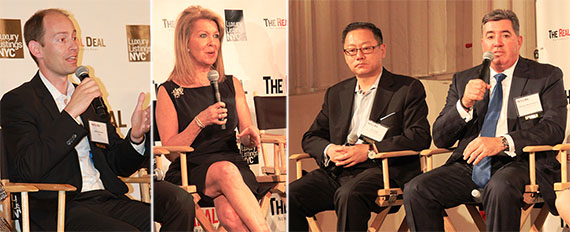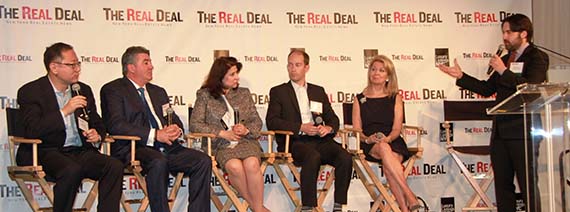Trending
TRD forum: China 2.0 is on its way
Panelists discuss foreign investment at TRD panel

A second wave of foreign investment is on its way from China to New York City, and real estate players here who want to stay on top of their game will have to adapt, panelists said at The Real Deal’s annual new development showcase.
Following a year of record capital flow, experts project that investment from China in NYC real estate could reach $50 billion over the next few years.
Addressing a standing-room-only crowd at the Metropolitan Pavillion, panelists discussed how sources of capital will change as the volume of investment grows.
“At one time, if you wanted to go get money out of China, you’d go to Shanghai, Beijing and maybe Guangzhou. We hardly touch on the big cities right now.” EB-5 immigration attorney Mona Shah said, during a panel on foreign investment moderated by TRD editor-in-chief Stuart Elliott.
“It’s all second-tier cities, smaller cities,” she explained. “EB 5 has stretched out and the second- tier-city people do have the same kind of income or more.”

From left: John Liang, Nicholas Mastroianni, Mona Shah, Jeffrey Dvorett, Nikki Field and Stuart Elliott
Sotheby’s International broker Nikki Field said that the first wave of buyers from China, who most likely worked with international business partners and sent their children overseas to be educated, were used to Western business norms and negotiating styles.
Dealing with second-wave buyers, Field said, will require brokers here to become more acclimated to the Chinese style of longer negotiations and more due diligence.
“Most importantly, dealing with the second tier is, I believe, preparing the sellers and the sponsors… for this new type of buyer,” she said. “I think if you manage expectations on the sales side you’ll have a lot more success.”
Xinyuan Development president John Liang, who is currently working on the Oosten condo building in Williamsburg, said this new wave will bring a new kind of commercial investor as well. Chinese companies, he said, will move beyond being residential developers or investors to purchasing commercial properties.
“The third wave, which is just starting, they’re institutional investors,” he said “They’re more interested in commercial real estate: long-term, income generating and it can be leveraged by cash flow. This type of money right now is looking for opportunities here in the U.S.”
There could be some road bumps, though. U.S. Immigration Fund President Nicholas Mastroianni, who helps arrange EB-5 financing, said that recent moves by the Chinese government, such as the recent crackdown on corruption, could affect the flow of cash out of the country.
“The government has changed its philosophy a few times over the last five or six years, and every time it does that, it affects the market.” he said. “It affects the mentality, because a lot of the investors are government officials or work for state-owned companies, and as the government cracks down on these officials it absolutely affects the market tremendously.”




